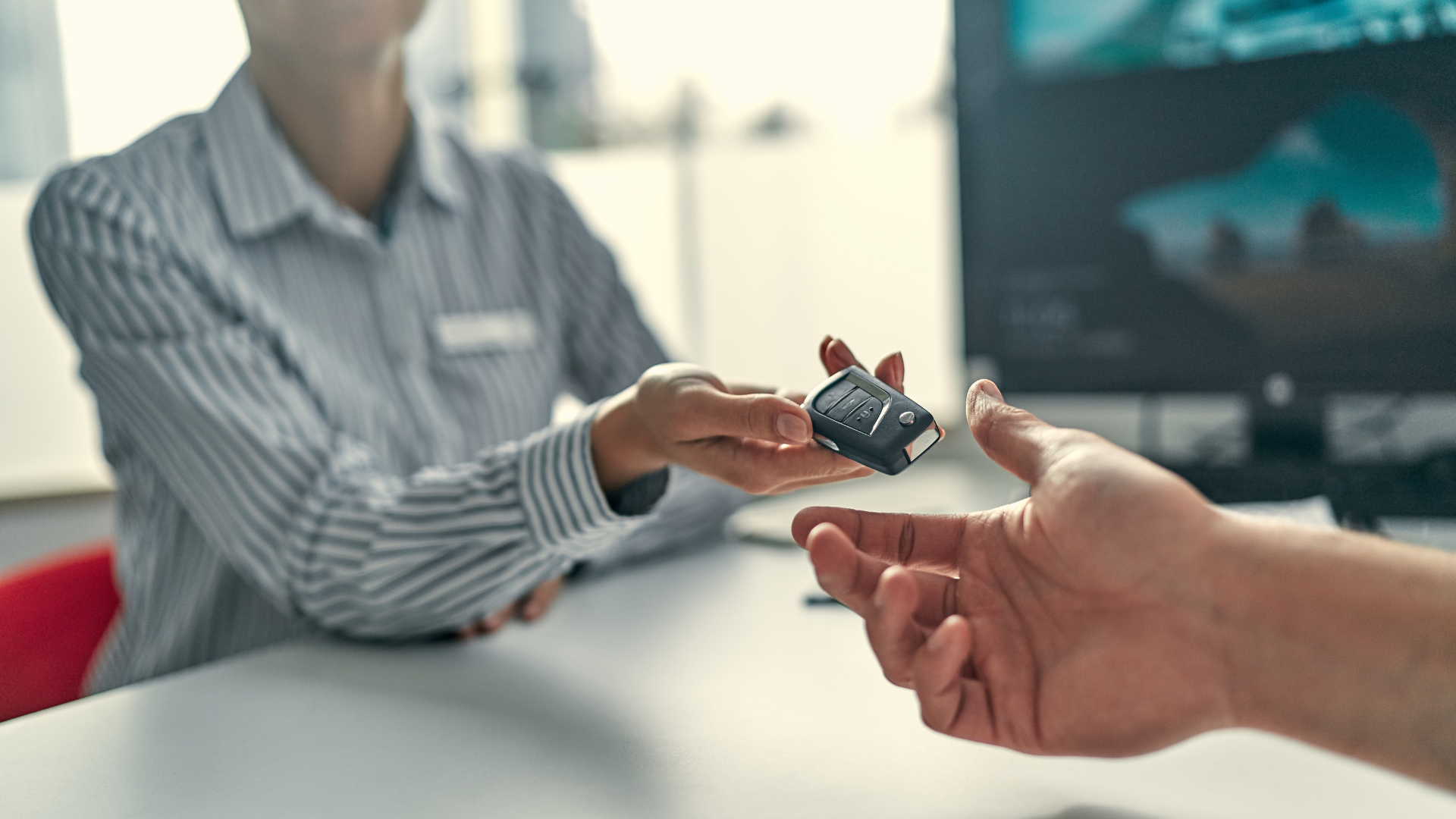Trading in a car is more common than many people think. The short answer to the question is that yes, people can definitely trade in a financed car without any problems. However, that new car purchase will not make the current car loan go away.
In all cases, the person making the trade-in must pay the remaining balance of the auto loan before jumping into the new car loan. There are several terms to consider in this process, such as positive or negative equity, the trade value of the old car, the down payment for the new car, the current loan balance, and more.
The following article will outline everything people need to know when they want to trade their financed car for a brand-new car, taking into consideration how much equity they have, how much the person owes in the monthly payment, the interest rate, and other important terms for financial protection.
How Can Someone Get a New Car Loan?

Overall, the process is fairly easy, especially if the trade value is positive. Overall the first thing the private buyer needs to do is to calculate how much balance is left on their current auto loan. That information can be found on the balance of the monthly statement of their financed car.
Moreover, the person will have to use an online source or other to estimate the current trade value of the car. However, it’s always much better to take the car to a dealership so that a professional can inspect the financed vehicle and determine how much it’s worth.
When someone is trading their car, and they still owe money to it, there are two scenarios that they may consider: Negative equity and positive equity.
Understanding Positive or Negative Equity
If the vehicle is worth more than the remaining balance on the old loan, this is excellent news since the person can put that extra money toward the purchase of the new vehicle. This is called “Positive Equity.”
On the other hand, if the vehicle is worth less than the money the person currently owes, they will have negative equity, also known as being “upside-down” on their loan. In these cases, they must pay the difference between the current car’s trade-in value and their current balance.
Depending on the dealer trade-in service, the person can pay the negative equity with cash, a new loan, or roll the old loan into the newer loan.
What Does Someone Need to Trade in a Car?
The dealer takes responsibility for the legal paperwork that comes from the private sale. However, the person interested in trading in the car must provide the following things dealer or expert:
- An up-to-date driver’s license
- The current loan information
- Vehicle registration document
- Car keys
- Insurance proof
- A trade-in value printout
In some cases, the trade-in value could be negotiable, which would potentially mean good news for the person. Overall, the person must aim to get good interest rates and a good price for the trade-in and the new car, avoiding negative equity.
Is There a Way to Maximize the Trade-in Value?
Absolutely! When getting a new vehicle, the person’s primary goal should be to avoid negative equity. While it can be a bit complicated to achieve this in some cases, it’s not impossible.
First, before making any offers, people may go online and look at similar models to what they want and their current prices; that way, they can have a better opportunity when negotiating the transaction.
Once the person has compared different prices, they must ensure that their car has received all of the necessary maintenance so that it stays in its optimal state. The better state the car is in, the easier it will be for the dealer to pass it on, which will give the person a bit more money.
Finally, it’s not a bad idea to clean and detail the old car before putting it up for sale; that way, the dealer saves a lot of time, which could translate into more money. There are several private sellers that will be more than happy to help the person with establishing their loan term and trading their financed car. All they have to do is look thoroughly for an option that suits their needs.
What Does “Rolling Over” Mean?
This is a common term that refers to combining the person’s old car loan balance with the new loan balance. In essence, the person would have to pay the remainder of the old balance at the same time as the new balance.
It’s vital for people to note that doing a roll-over doesn’t get rid of the old loan. The person must still repay their loan completely and then go on to pay the next loan.
Should a Person Trade in a Car with Negative Equity?
In most cases, it’s not recommended for people to trade their car if they’re on the “upside-down.” This is because the person would still have to pay the full remainder of the loan. The following process is only recommended for those who may want to downsize to a less expensive car or a used car, which would mean the person would have to pay a lower amount of the negative equity.
Another option, in this case, would be to roll the equity into the new loan. At first, it may sound convenient, but that would, theoretically, make the person have negative equity automatically in their new loan, so they would have to pay even more money in the future.
Unless the person is looking to downsize to a car of a lower value with their trade, it’s recommended to postpone the car purchase until they either pay off the loan or have positive equity to cover the costs of the new car.
Bottom Line
Overall, it’s entirely possible to trade a financed car, but the interested person must do a lot of research to evaluate all the possible options. In either case, having positive equity is the best option to ensure saving money. Otherwise, they risk getting a much bigger loan in the future.
Either way, the best thing the interested person can do is to talk to an expert dealer to assess all the options available and choose the one that’s best for their needs.


